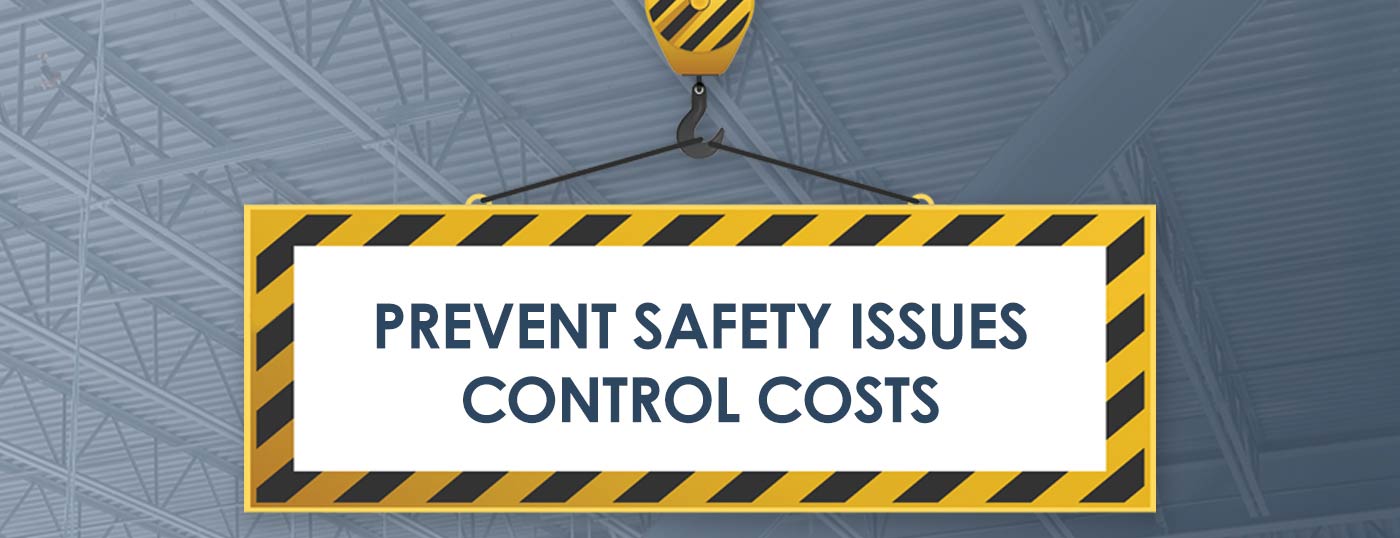
Posts welded to thin chord angles, which act independently, can be problematic. The Steel Joist Institute does not recommend joists be used as anchorage points for fall arrest systems. It is acknowledged, however, that at times joists do need to be used for anchorage points. Recognizing the scope of this problem and related solutions can help the engineer of record (EOR) prevent field safety issues and control costs while adding maximum flexibility to the installers.
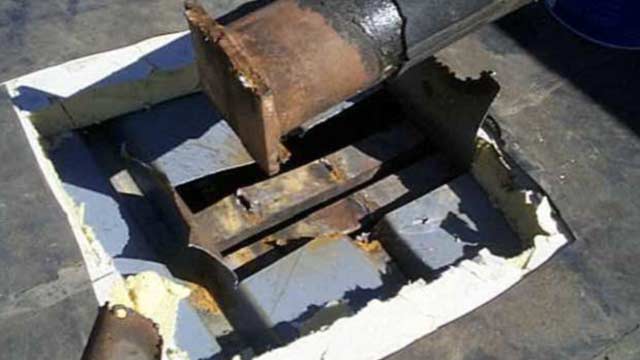
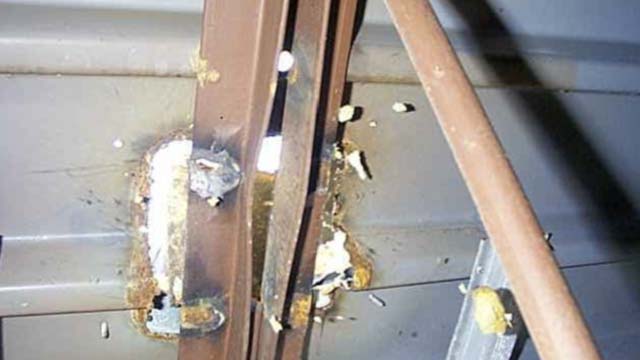
For reasons demonstrated by the photos above, the attachment of fall arrest anchorage or screen posts to the top chord of a joist is not recommended. Lateral bending forces in conjunction with poor field welding can result in post tear-off, as was the situation shown above left. The photo above right shows the underside view of the joist top chord after post connection failure.
Field-welding fall arrest posts directly to the top chord of a steel joist can be problematic due to the independent acting chord angles and thinner materials typically used in joist construction.
Also problematic is the request to include fall arrest loading during the design and fabrication of a steel joist, as this typically will add a range of performance and cost considerations. This approach increases engineering complexity. Often, the exact post locations are not shown in the structural drawings, and post locations can change multiple times during the planning of a project. Post connection details and loading information are often lacking. Requests for information (RFIs) are typically protracted. The project can be delayed. Costs for the affected steel joists will increase due to the added engineering time and special fabrication techniques.
More significant are the added costs associated with increased joist weight due to the larger chord sizes that are typically needed to address local chord bending moments related to the anchorage post reactions.
Often the most optimal alternative to the specification of anchorage posts on top of joists is for the EOR to specify H-frame supports, with anchorage posts located between the joists.
In this approach anchorage posts are attached to framing specified by the EOR to safely resist the post reactions. Ideally, the use of these H-frames provide steel fabricators and erectors with maximum flexibility and have the least impact on joist design and coordination of fall arrest anchorage locations. If H-frames are used, then only simple +/- vertical loads along with an axial component need to be considered in the joist design (see example drawings below). These loads can be applied in zones along the length of joists.
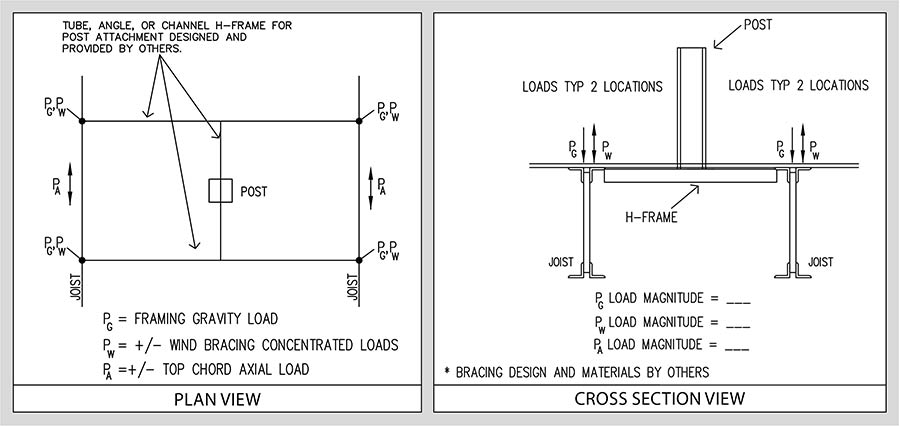
Often the most optimal alternative is for the engineer of record to specify the anchorage posts located between joists, attached to framing.
A second solution is for the EOR to specify the attachment of a post to the side of the joist and to reinforce it with bracing between adjacent joists to resolve out-of-plane torsion into vertical forces on the adjacent joist. The loading to be considered for the post framing extending to the joist bottom chords would be +/- vertical post reactions, axial load and an in-plane moment (see example drawings below).
The minor drawback with top and bottom chord post connections is the out-of-plane bracing that is required to prevent torsion in the weak axis of the joists. All of these loadings can have approximated load locations to provide maximum flexibility in the field along with minimal effect to joist design.
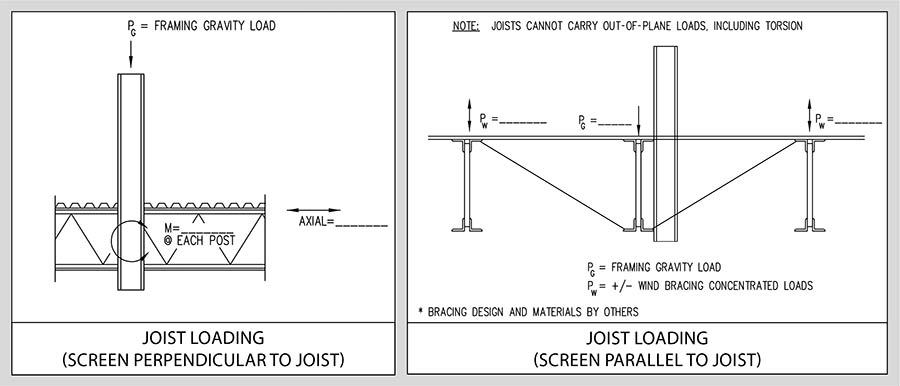
A second solution is for the EOR to specify the attachment of a post to the side of the joist and to reinforce this with bracing between adjacent joists to eliminate any out-of-plane moments on the affected joists.

The Texas Rangers pulled out all the stops for their new stadium, building the biggest retractable roof in the world and using partially transparent roof material. The attention to detail extends to the custom-painted roof deck that allows players to more easily see—and catch—the baseball. See for yourself now.
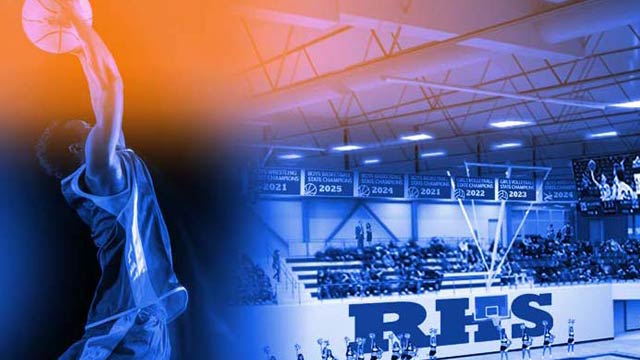
Rogers High School in Rogers, Arkansas, underwent a recent overhaul that included a $16.5 million gymnasium. The ambitious vision for Mountie Arena called for the atmosphere to mimic that of a professional facility. To do that, 85-foot-long, 12-foot-deep double-pitched steel joists were used to create an expansive, arena-like feel.
Building a better steel experience